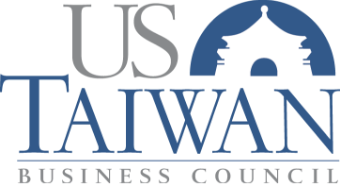Testimony:
The International Trade Administration:
Comments Regarding Causes of Significant Trade Deficits for 2016
(Washington, D.C., May 10, 2017)
Written Testimony by Lotta Danielsson
Published by the US-Taiwan Business Council
Introduction
On March 31 2017, President Donald Trump signed Executive Order 13786, directing the Department of Commerce and the Office of the U.S. Trade Representative (USTR) to work with other relevant agencies within the U.S. government to produce an Omnibus Report on Significant Trade Deficits.
Taiwan has been identified as one of the 14 foreign trading partners with which the U.S. had a significant trade deficit in 2016, and the U.S.-Taiwan trade relationship will therefore be investigated under this directive.
The US-Taiwan Business Council, formed in 1976, is a non-profit, membership-based organization dedicated to developing the trade and business relationship between the United States and Taiwan. Members consist of public and private U.S. companies with business interests in Taiwan, and range in size from small consulting firms to large multinational corporations. The organization aspires to be an effective representative for those members in dealing with business, trade, and investment matters between the United States and Taiwan.
Since its inception, the Council has worked with our members and with the U.S. and Taiwan governments to support the bilateral trade and commercial relationship. For example, we played a key role in the business discussions in the lead-up to Taiwan joining the World Trade Organization (WTO) in 2002.
The US-Taiwan Business Council appreciates this opportunity to submit our comments to the International Trade Administration as part of your preparatory research for the Omnibus Report.
Trade, Trends, and the U.S. Trade Deficit with Taiwan
To better understand the U.S.-Taiwan bilateral trade relationship, it is instructive to briefly examine both trade trends and trade deficit trends and rankings.
In 2016, Taiwan was the 10th largest trading partner of the U.S., while the U.S. was Taiwan’s second largest trading partner. The U.S. is actually regaining ground in Taiwan, taking the 2nd position from Japan in 2014 after losing the number one spot as Taiwan’s largest trading partner to China in 2005.
Figure 1 illustrates U.S. Census Bureau trade figures for Taiwan between 1986 and 2016. It is worth noting that imports and exports have both risen similarly and together over the last 30 years. The 2016 trade deficit at US$13.3 billion is well within its historic range for Taiwan – with the average for the last 30 years at $12.9 billion per year – and it also represents an 11.8% decrease over 2015. The U.S. trade deficit with Taiwan was at its highest in 1987, and at its lowest in 1993.
We also examined Taiwan’s relative position during the last ten years of U.S. trade deficit rankings, see Table 1. Between 2006 and 2016, Taiwan did not appear even once in the Top-Ten list of countries with the largest trade deficits with the United States. Indeed, Taiwan’s highest ranking during the last decade was 12.
Based on the information disseminated by the International Trade Administration, the final Omnibus Report will examine the European Union as one entity together. In fact, individually some EU countries – such as Italy – actually account for a larger share of the overall U.S. trade deficit than Taiwan does. Table 2 compares Taiwan’s share of the overall U.S. trade deficit with that of China and Italy during the last ten years.
Trade Obstacles
Taiwan is generally not engaging in unfair and discriminatory trade practices, and is working towards liberalizing their domestic trade regime and improving transparency. Some market protections remain, and various barriers to open and free trade with Taiwan are actively tracked by USTR. However, Taiwan’s accession to the WTO in 2002 and to the WTO Government Procurement Agreement in 2009 led to a general dismantling of non-tariff barriers and a lowering of tariffs.
While there are certainly obstacles remaining to address between the U.S. and Taiwan on trade, existing and future issues have a resolution mechanism via the Trade and Investment Framework Agreement (TIFA) signed in 1994. The two sides currently use TIFA meetings as the principal means for trade dialogue. The most recent TIFA meeting took place in October of 2016, and included discussions on intellectual property rights protection, pharmaceuticals, medical devices, agriculture, and technical barriers to trade.
One of the continuing irritants in the trade relationship is the U.S. insistence that Taiwan respect international maximum residue limits established for ractopamine — a leanness-enhancing compound currently banned in pork imports to Taiwan. The Taiwan government is continuing to work towards a solution on these pork imports, and has said that it will conduct risk assessments based on scientific evidence and international regulations. The U.S. business community is optimistic that this issue can be resolved.
(See attachment for full text)
